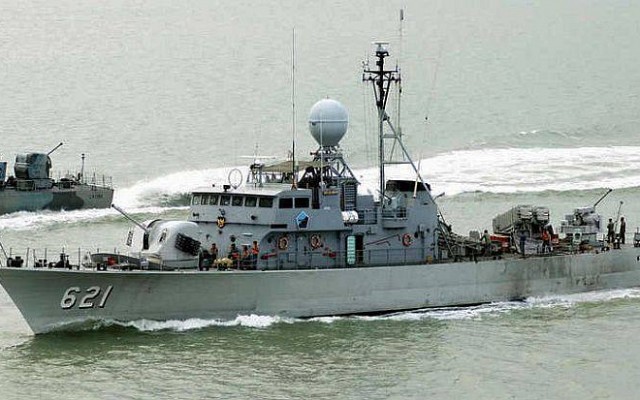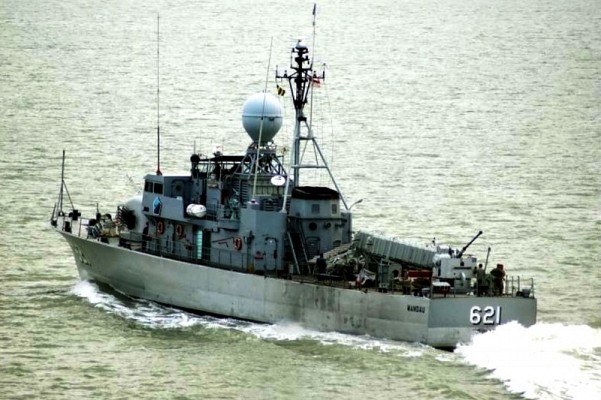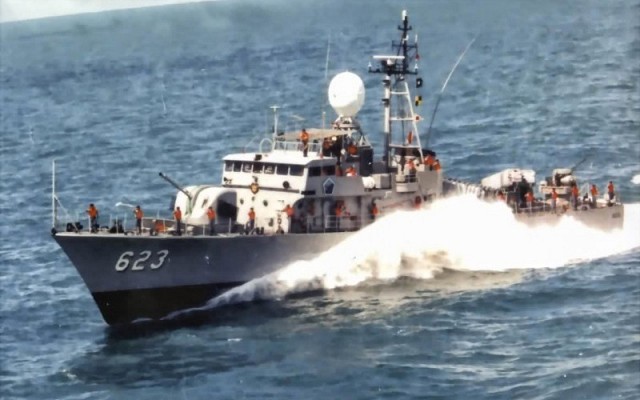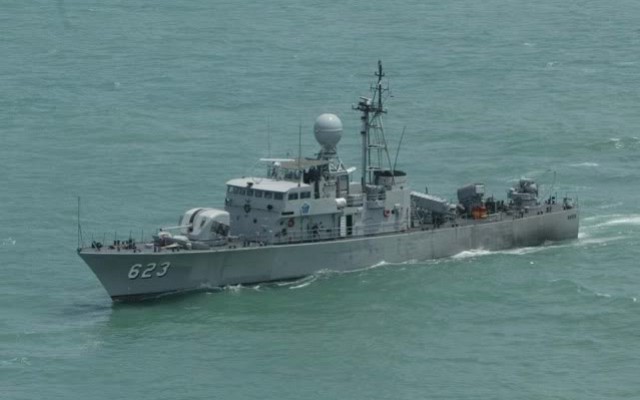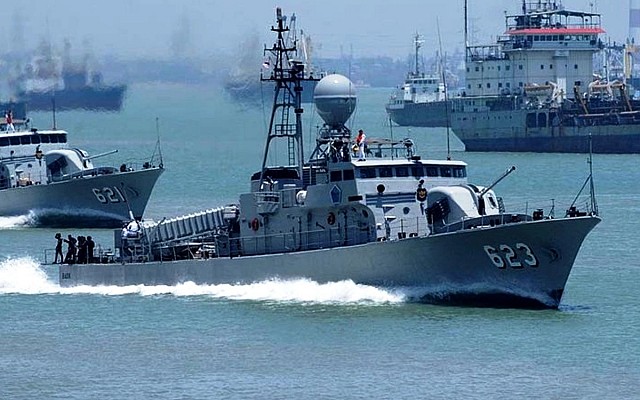Mandau class
PSMM Mk 5 for Indonesia
Overview
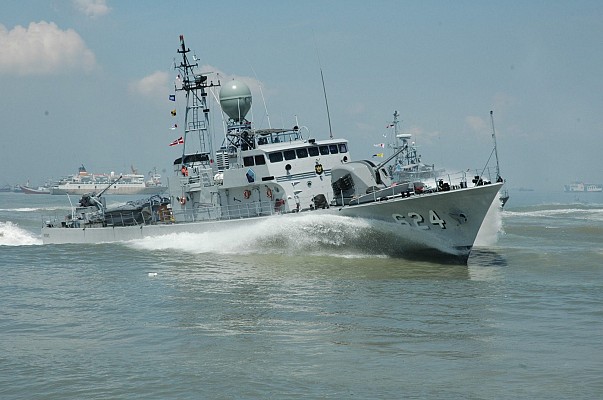
Mandau class
Indonesian navy KRI Keris of the Mandau class seen in 2012.
Source: TNI-AL | Indonesian navy -
© Public domain
1 lost in fire
PSK / Patrol Ship Killer
Dagger class
Description
Introduction
The Mandau class is a late Cold War era class of fast missile boat of South Korean origin. These were built in South Korea specifically for export to Indonesia and are a derivative of the American PSMM Mk 5 design for South Korea.
Design
The Mandau class is a further development of the Paek Ku class, which is also of the Patrol Ship Multi-Mission Mk 5 design. The engine setup has been modified closer to the original Asheville design with two economic diesel engines and a single gas turbine. The diesels allow the Mandau class to be used as a long range patrol vessel. Compared to the Paek Ku the armament is different in having 57mm gun instead of 76mm and Exocet missile instead of Standard or Harpoon.
Sensors
The sensor suite consists of a search radar, a fire control radar and an optronic director. The last two ships in class were fitted with an ECM system.
Firepower
Armament consists of 57mm Bofors Mk 1 gun turret on the bow and a 40mm Bofors L/70 in an open mount aft. Two 20mm S.20 pedestal mounted autocannon are fitted on the superstructure. Anti-ship armament consists of four MM38 Exocet subsonic sea skimming missiles. On patrol duties these are often not carried. Possibly these aging missiles are to be replaced by Chinese C-802 subsonic sea skimming missiles.
Mobility
The Mandau class features a combined diesel or gas (CODOG) propulsion. Two MTU diesels provide economic travel up to a maximum speed of 17 knots, but more often at about 14 knots for fuel efficiency. Each diesel powers a single shaft. For combat actions a single LM-2500 gas turbine powers both shafts instead. This 25.000 hp engine allows for a maximum speed of 41 knots.
Users
The Mandau class was specifically designed and built for the Indonesian navy. A single ship was lost to fire at sea in 2018. Since their commissioning these ships are on active patrol duties and are often seen at sea.
Details
Media
Subcomponents
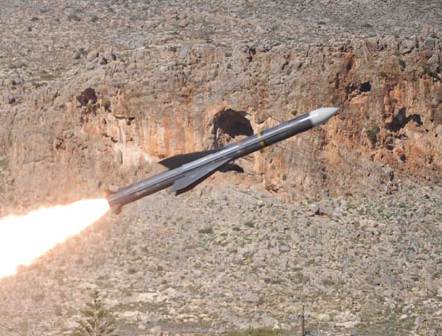
MM38 Exocet
The Mandau class has 2x2 launchers for the MM38 Exocet sea skimming anti-ship missile on the aft deck.
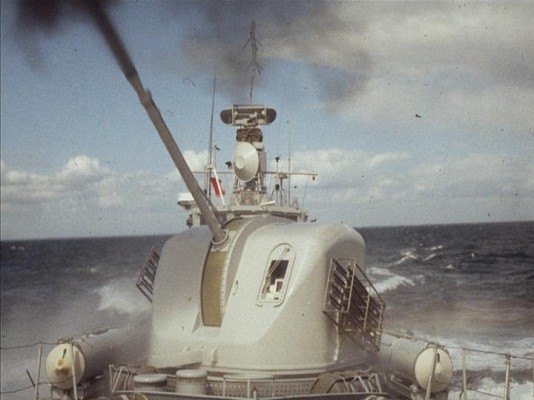
57mm Bofors SAK-57
Single 57mm Bofors SAK-57 Mark 1 is mounted on the bow, including flare launchers on either side of the turret.
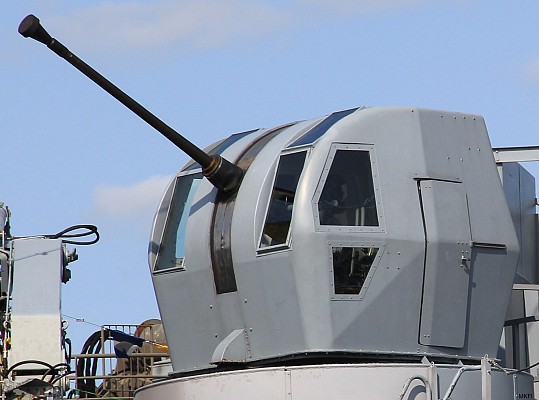
40mm Bofors SAK-40 L/70
Single 40mm Bofors SAK-40/L70 in Type 350AFD mount at the stern with 144 rounds in automatic feed device.
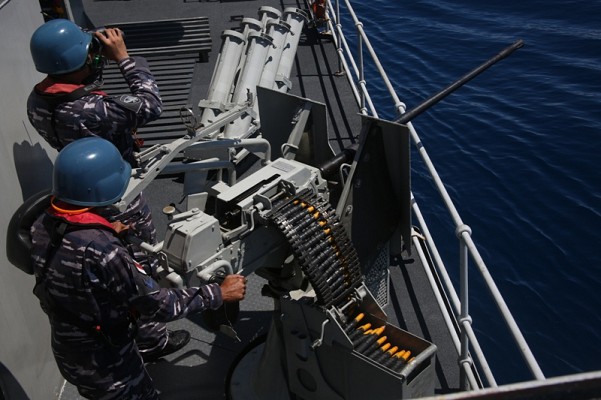
20mm Rheinmetall S-20
Two 20mm S.20 pedestal mounts are fitted for self-defense.
Related articles
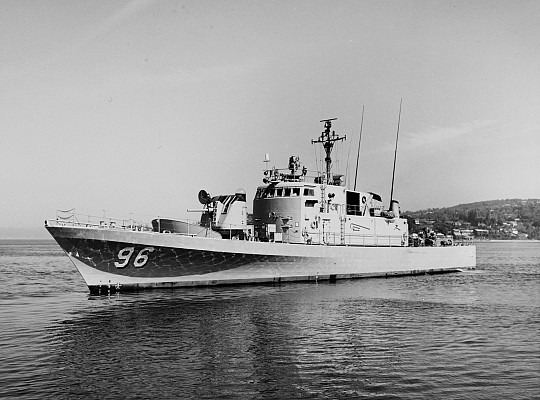
Paek Ku class (PSMM Mk 5)
The Mandau class is a further development of the PSMM Mk 5 design originally developed for export sale to South Korea.
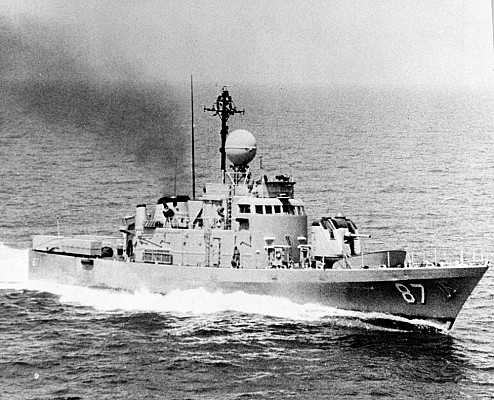
Asheville class
The Mandau class uses a CODOG propulsion design that is more akin to the original Asheville class.
